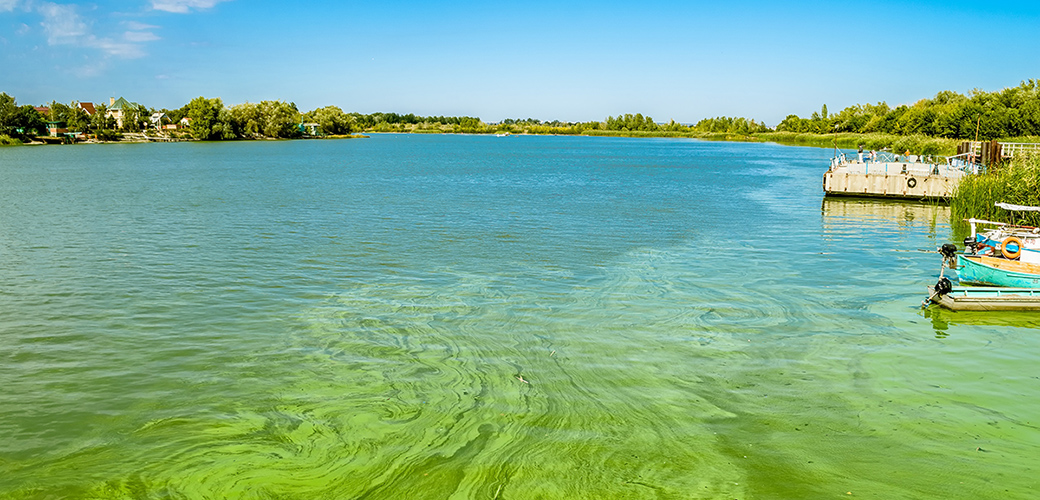

With warmer weather comes more time spent outdoors with our pets! This includes many of us spending days lakeside, where dangerous toxins like blue-green algae may lurk. Many pet parents are not aware of the severity of blue-green algae intoxication. So the ASPCA Animal Poison Control Center (APCC) wants to make sure you have all the information you need to keep your furry friends safe.
What Is Blue-Green Algae and Why Is It Dangerous?
Blue-green algae, otherwise known as cyanobacteria, is most likely to thrive in bodies of fresh water when the weather is warm—75 degrees and over—and sunny. Warmer weather promotes the growth of cyanobacteria which, in turn, causes more algae intoxications during this time. Cyanobacteria is incredibly toxic and is known to cause poisoning in dogs, cats, livestock, wildlife, birds, fish and even humans.
How to Spot It
Water containing toxic blue-green algae will often appear as a pea-green paint or as slime on the surface of the water. If certain wind conditions are present, the film will often concentrate along the shoreline in areas where animals may drink or swim.
Symptoms of Intoxication
Dogs can develop poisoning when they drink from, or even swim in, contaminated water sources. If blue-green algae is ingested, it can cause severe neurologic or liver damage.
Signs of blue-green algae toxicity includes:
- Seizures
- Panting
- Excessive drooling
- Respiratory failure
- Diarrhea
- Disorientation
- Vomiting
- Liver failure
- Ultimately death
If your dog begins to experience any of these symptoms, you should contact your veterinarian immediately.
Prevention Is Key
Be sure to stay alert when it comes to your pet and blue-green algae. Don’t allow your pet to drink from stagnant ponds, lakes or other bodies of water that have bluish-green scum on the surface of around the edges.
Blue-green algae cells can also stick to your pet’s fur and be ingested when they clean themselves, so take caution before allowing your pet to jump into a body of water and be sure to rinse your pet thoroughly with fresh water after going for a swim.
Many public health departments test fresh water frequently in areas that are known to have outbreaks and will post signs when there is a problem—vigilance is very important!
If you suspect that your pet ingested something potentially toxic, please call your veterinarian or the ASPCA Animal Poison Control Center at 888-426-4435 immediately.
Source: Read Full Article
